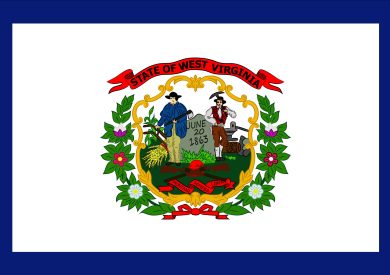
 Popular Cities For Lending in West Virginia
Popular Cities For Lending in West Virginia
Huntington
Martinsburg
Morgantown
Parkersburg
South Charleston
St. Albans
Teays Valley
Vienna
Weirton
Wheeling
In the West Virginia real estate market, grabbing properties before your competition is essential for making the best deals. Although real estate investors sometimes go the traditional route and seek bank loans, the process is anything but speedy.
When time is of the essence, waiting for the lengthy process of getting approval is not an option for most investors. West Virginia hard money lenders specialize in providing hard money loans which provide quick funds to investors. These loans are for a non owner occupied property or in some cases for business purpose loans.
West Virginia Hard Money Lender FAQ’S
Below are some of the most frequently asked questions we get regarding hard money loans and lenders in West Virginia.
What Do West Virginia Hard Money Lenders Specialize in?
West Virginia hard money lenders specialize in providing short-term, creative financing for real estate investors. If you seek a conventional lender to purchase an investment property, your loan request will be based on the property’s value and your assets. Your credit score, job, and finances will be scrutinized intensely. Hard money lenders base their final loan decisions on the after-repair value. The ARV represents the potential value of a property after all repairs have been accomplished.
What are the Benefits of West Virginia Hard Money Loans?
West Virginia hard money loans offer advantages that traditional banks cannot. Lenders like Acamnet Financial offer a higher level of flexibility than banks. When qualifying for this type of loan, lenders do not delve too deeply into the finances of real estate investors. In most cases, simply present the property and your plans, which saves you the hassle of gathering countless financial documents.
Do West Virginia Hard Money Lenders Look at my Credit Score?
One of the greatest benefits of working with West Virginia hard money lenders is the lack of credit score requirements. One of the first things a bank does is check your credit score. You can get approved for a hard money loan in West Virginia even if you have bad credit or poor credit, bankruptcies, and foreclosures in the past. West Virginia Hard money lenders primarily care about the property you are purchasing.
What is the Interest Rate & Points for Hard Money Loans in West Virginia?
Interest rates for hard money loans in West Virginia are typically higher than traditional bank loans (conventional loans) because of the greater risk lenders must take on when approving loans. When searching for a hard money lender near me in West Virginia, you will find average interest rate is between 8%-15%. You should also be aware that lenders sometimes charge points that are meant to offset their administrative costs. Each point represents 1% of the total loan amount. The average points lenders charge is between 1 to 3. Some lenders may charge up to 10 points. These points are due upfront or at closing, depending on the lender.
What Should I Look for in a West Virginia Hard Money Lender?
There are many benefits to working with a West Virginia hard money lender. You just need to make sure you are working with the right lender. You can rely on Acamnet Financial Group when you need us most. We offer reliability, consistency, experience, and support. As a real estate investor, you know the importance of grabbing the best property deals when they become available.
How can Hard Money Lenders in West Virginia Help Me?
Whether you are new to real estate and real estate projects or an old pro, you know having the capital to purchase real estate is essential. Without funds, you will miss out on real estate transactions. When you partner with hard money lenders in West Virginia, you will quickly get the money you need without jumping through the hoops of traditional bank lenders.
How do I get a Hard Money Loan in West Virginia?
When you want a hard money loan in West Virginia, begin by preparing the property information. Location, size, purchase price, after repair value, repair costs, etc. In most cases, the financing will be based on these numbers. Then, apply for a hard money loan in West Virginia using this information and supply some financial information. Then, an appraisal will be ordered to assess the loan-to-value ratio, which will influence the loan amount.
How do I Refinance a West Virginia Hard Money Loan?
Refinance a West Virginia hard money loan will involve moving from a high interest, short term loan to a longer term, usually lower interest rate loan. Typically a conventional type of loan. When refinancing a West Virginia hard money loan you will find it will have a more stringent set of guidelines. You will need to have sufficient credit and income qualifications. As the lending landscaping and regulations constantly change, you want to consult a knowledgeable conventional loan expert.

Current Real Estate Trends In West Virginia (2024)
The West Virginia real estate market is showing a mix of stability and potential issues. Data reveals a 1.9% median sale price increase over the last year, but there was a huge 19.6% drop in the number of homes sold in the same period. This signals a market slowdown, which is creating a buyer’s market. Analysts forecast a 20% decrease in home values, adding to the buyer’s benefit.
Mortgage rates have risen by 33.13%, which may make buyers reconsider entering the market. On the flip side, the amount of listings increased by 110.6%, with the average time on the market being 45 days. Although there is an increase in housing inventory, the supply is still quite low.
Economists are predicting a market slowdown, but not a crash. Factors like tough lending standards, low foreclosure rates, and a limited inventory are maintaining stability. It is difficult to determine if the market in 2023 will be a buyer’s or seller’s market.
Market Overview
West Virginia’s housing market is showing signs of a slowdown. Median sale prices have gone up by 1.9% year-on-year, but the number of homes sold has decreased by a staggering 19.6%. With mortgage rates at 6.79%, potential buyers may be deterred.
This could cause distress to those buying and selling property in the area. In addition, the possibility of a housing market recession raises fears and may further complicate matters.
The situation is unfavorable for those looking to buy or sell property. With an increase in mortgage rates and a drop in the number of sales, it is becoming difficult to make a successful purchase or sale.
It is important to be aware of the current market conditions when planning to buy or sell. Further analysis and research of the market is recommended to gain a full understanding of the situation. By doing this, buyers and sellers can make the best decisions for their needs.
Buyer’s Market
Potential homebuyers in West Virginia have an extraordinary opportunity to take advantage of the current buyer’s market. Home prices have dropped by 20%, the number of listings has increased by 110.6%, and homes are staying on the market for 45 days on average.
Despite higher mortgage rates at 33.13%, buyers still have access to good financing options. This is a great time to purchase a home with a wide selection of options and plenty of time to decide.
It’s an excellent opportunity that shouldn’t be missed.
Market Updates
The West Virginia housing market is rapidly changing. Buyer demand is declining, with homes staying on the market for an average of 32.3% longer than usual. This suggests a market slowdown. Mortgage rates are currently at 6.79%, which may be contributing to the decrease in buyer activity. On the other hand, the median sale price has risen by 1.9% year-on-year, indicating some level of stability in the market. Additionally, the sale-to-list price ratio is at 101.2%, suggesting fierce competition among buyers. Overall, these market updates reflect the current state of the West Virginia housing market.
Sources
https://www.houzeo.com/blog/west-virginia-real-estate-market/
https://zerodown.com/housing-market-analysis/west-virginia
https://housecashin.com/investing-guides/investing-wv/

All About West Virginia
West Virginia, located in the Southern United States, is a state known for its mountains, rolling hills, and historically significant coal mining and logging industries.
With an area ranking as the 10th-smallest and a population ranking as the 12th-least populous, West Virginia is characterized by its mountainous terrain and abundant natural resources, which have greatly influenced its economy and the lifestyles of its residents.
This article aims to provide an objective and informative overview of West Virginia, covering various aspects such as its location and size, admission to the Union, geographical regions, natural features, and political and labor history.
By exploring these topics, readers will understand the state’s significance and unique attributes comprehensively.
Location and Size
West Virginia, located in the Southern United States, is bordered by Pennsylvania, Maryland, Virginia, Kentucky, and Ohio. It is known for being the 10th-smallest state by area and the 12th-least populous state.
Despite its small size, West Virginia has a diverse geography. The Northern Panhandle extends adjacent to Pennsylvania and Ohio. Huntington is in the southwest, close to Ohio and Kentucky. Martinsburg and Harpers Ferry are in the Eastern Panhandle region.
The state is often included in the Mid-Atlantic, Upland South, and Southeastern United States. West Virginia is entirely within the area served by the Appalachian Regional Commission.
With this geographical context, the subsequent section will explore its admission to the Union.
Admission to the Union
Upon its admission to the Union on June 20, 1863, West Virginia emerged as a significant border state during the American Civil War, marking a pivotal moment in the nation’s history.
The state’s formation resulted from its decision to separate from Virginia, which had seceded from the Union and joined the Confederacy.
West Virginia’s loyalty to the Union was crucial in maintaining its presence in the region and preventing Confederate control of the Ohio River and its transportation routes. The state’s strategic location and resources, including its coal mines and industrial capabilities, played a vital role in the Union’s war efforts.
This period of admission to the Union set the stage for West Virginia’s subsequent development as a distinct and influential region within the United States.
Moving forward to the next section on geographical regions, West Virginia’s diverse landscapes and locations within the Appalachian region will be explored.
Geographical Regions
Located in the heart of the Appalachian region, West Virginia’s geographical diversity encompasses the rugged beauty of the Northern Panhandle, the vibrant cityscape of Huntington in the southwest, and the historical charm of Martinsburg and Harpers Ferry in the Eastern Panhandle region.
The Northern Panhandle extends adjacent to Pennsylvania and Ohio, while Huntington is close to Ohio and Kentucky. Martinsburg and Harpers Ferry, on the other hand, are located in the Eastern Panhandle region.
West Virginia is often included in the Mid-Atlantic, Upland South, and Southeastern United States. It is entirely within the area served by the Appalachian Regional Commission.
This varied geography sets the stage for West Virginia’s abundance of natural features, which include its mountains, rolling hills, and a wide range of outdoor recreational opportunities.
Natural Features
The natural features of West Virginia encompass a diverse landscape characterized by majestic mountains, rolling hills, and an abundance of outdoor recreational opportunities.
The state is known for its breathtaking mountain ranges, including the Allegheny Mountains, the Appalachian Mountains, and the Blue Ridge Mountains. These mountains provide a stunning backdrop for various outdoor activities, such as hiking, camping, and wildlife observation.
Additionally, West Virginia is home to numerous rivers, including the Ohio River, the Potomac River, and the Kanawha River, which offer fishing, boating, and whitewater rafting opportunities.
The state’s natural beauty and resources have played a significant role in shaping its history and economy, from the historically significant coal mining and logging industries to the preservation of its natural resources for future generations.
Transitioning into the subsequent section about political and labor history, these natural features have had a profound impact on West Virginia’s development and the influence of political and labor movements.
Political and Labor History
In examining West Virginia’s political and labor history, it is evident that the state has experienced significant shifts in its political landscape. Traditionally, West Virginia voted heavily for the Democratic Party, but it has become a deep red state at the federal level.
West Virginia has a long-standing tradition of union-based politics, with the influence of political and labor movements shaping its history. These movements have played a crucial role in advocating for workers’ rights and influencing policy decisions.
However, in recent years, the state has shifted towards Republican dominance. This shift reflects more significant trends across the United States, where many historically Democratic-leaning states have become more conservative.
West Virginia’s political and labor history is a testament to the changing dynamics of American politics. It highlights the impact of economic and social factors on voter preferences and the evolving nature of political ideologies.
Overall, understanding West Virginia’s political and labor history provides valuable insights into the complexities of American politics and the factors that shape voter behavior.


 Popular Cities For Lending in West Virginia
Popular Cities For Lending in West Virginia